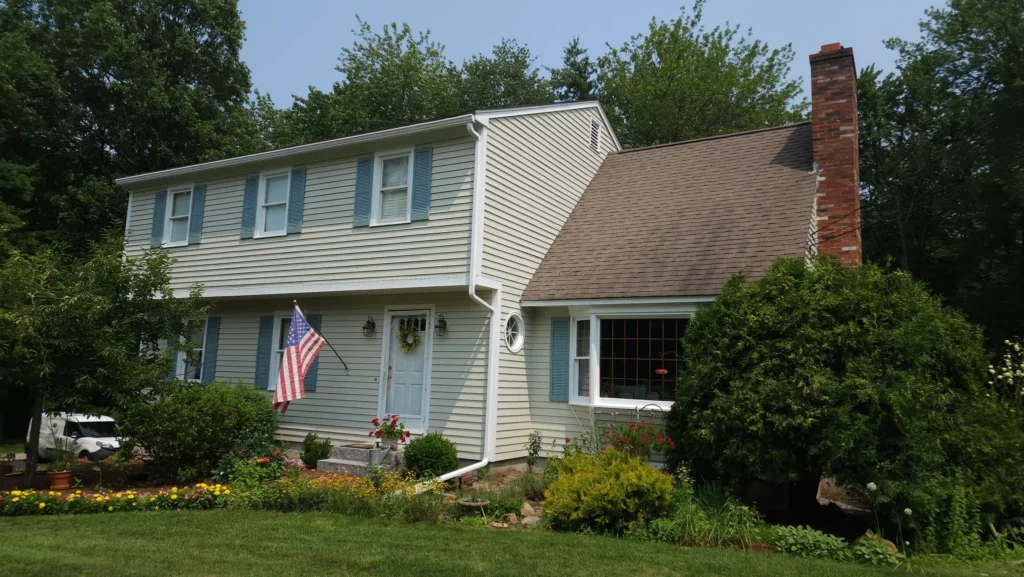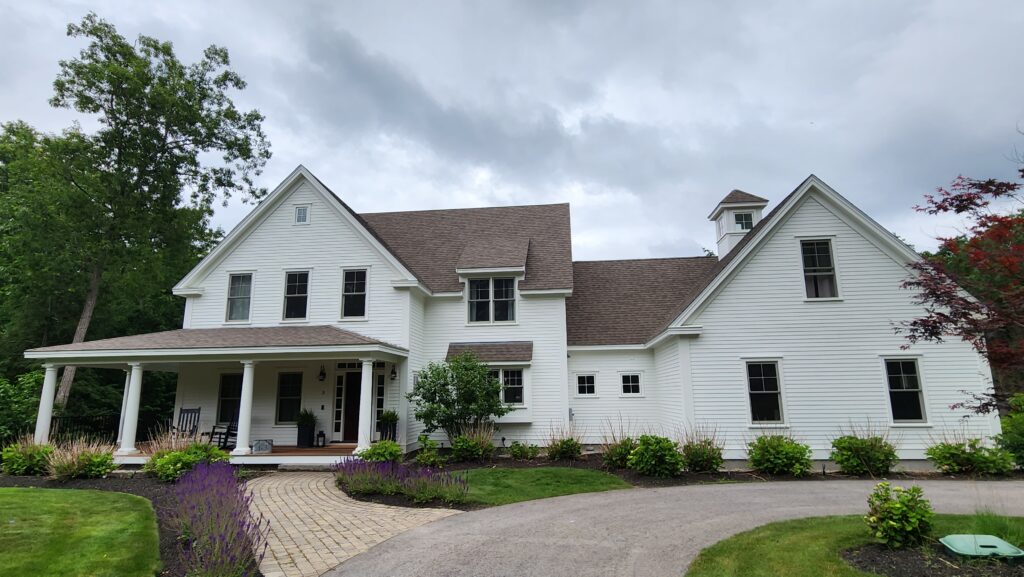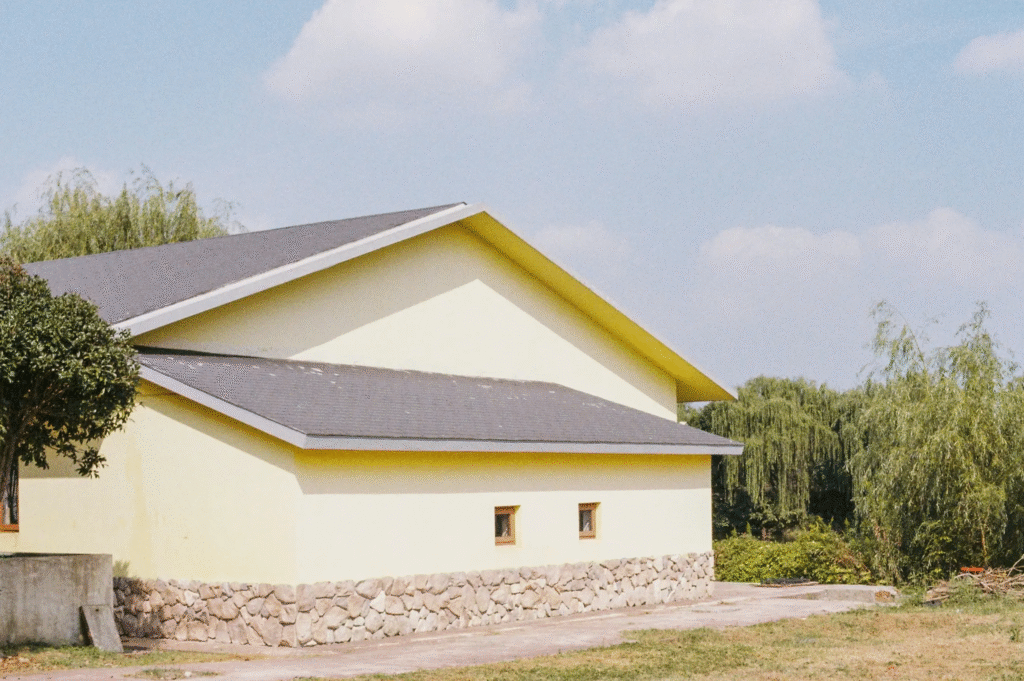Homeowners are often shocked at how much exterior painting can vary in cost. One neighbor might mention paying $8,000 for a full repaint, while another claims to have done the same job for half that. The truth is, in New England, there’s no one-size-fits-all estimate. Between the unpredictable weather, the age of the home, and the type of siding, costs can swing widely.
The problem is that many homeowners go into a project unprepared for these variables. Exterior house painting is a significant investment that protects your home’s exterior and helps maintain its value. New England’s climate isn’t kind to paint, and factors like prep work, surface repairs, and choosing the right products often add unexpected expenses. Without a clear understanding of these drivers, it’s easy to underestimate your budget for maintaining your home’s exterior.
Why Exterior Painting Costs More in New England
Painting a home in New England is not the same as painting one in California or the Midwest. The region’s unique climate and geography create extra challenges that drive costs higher. Skipping it means your paint job will fail within a few seasons. Neglecting proper prep work or repainting can result in costly damage to your home’s exterior materials, as weathering and moisture can quickly lead to expensive repairs.
1. Harsh winters and humid summers mean more wear and tear
Paint isn’t just cosmetic; it acts as a protective shield. In New England, the constant freeze-thaw cycles, ice buildup, and humid summers cause paint films to expand and contract, leading to cracking and peeling much faster than in milder climates. As a result, exterior surfaces in this region require painting more often than in areas with less severe weather.
2. Frequent repainting requires higher-quality paints
Because of this rapid wear, New England homes often need repainting every 7–10 years, compared to 12–15 in other regions. To extend longevity, contractors often recommend premium paints that are more durable but also more expensive upfront. High-quality paints, such as those from Benjamin Moore, are recommended because they offer superior durability and resist fading over time.
3. Salt air near coastal towns adds additional stress
If you live near Cape Cod, Portsmouth, or other coastal areas, salty air and wind-driven moisture accelerate paint failure. Special formulations designed for coastal environments can withstand this—but they come at a premium.
4. Extensive prep work is non-negotiable
Scraping off old layers, power washing to remove dirt and mildew, sanding uneven surfaces, priming raw wood, removing old paint that is flaking or bubbling, and repairing siding issues aren’t optional steps in New England. Using a pressure washer is an effective way to clean the home’s exterior before painting. Prep work can account for 50% or more of the total labor costs, but skipping it means your paint job will fail within a few seasons.
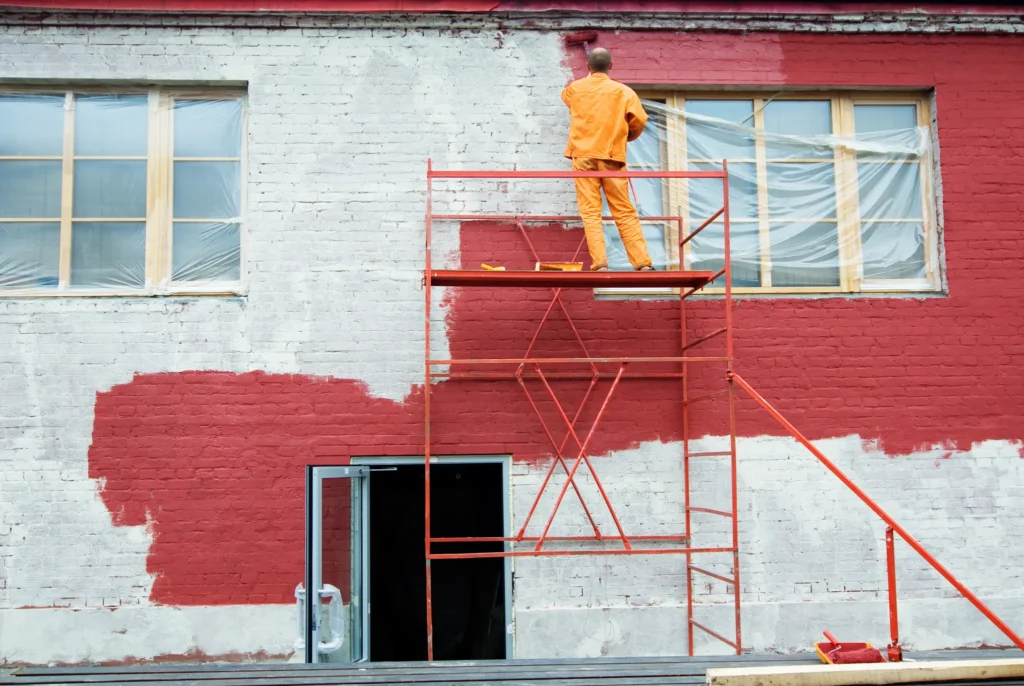
Key Factors That Influence Price
Once you understand why exterior painting is more expensive in New England, the next step is to look at the individual factors that directly affect your project cost. When considering exterior house painting cost, it’s important to be aware of the typical cost range homeowners can expect, as this can vary widely based on several factors. No two homes are the same, so your final estimate will depend on a combination of size, condition, materials, and the job’s complexity, all of which influence the final price.
1. Size of the Home
The most obvious factor is square footage. The bigger your home, the more labor and materials are required, which will increase costs. A small Cape or ranch-style house under 1,500 square feet may cost between $4,000 and $7,000, while larger Colonial-style homes (2,500–3,000 square feet) can easily range from $8,000 to $15,000 or more. The bigger the surface area, the more paint and labor hours required. For example, painting 1,000 square feet typically costs between $2,500 and $4,500, depending on the siding material and other factors.
2. Type of Siding
Different siding materials hold paint differently.
- Wood siding (common in older New England homes) requires more scraping, sanding, and priming to protect against rot and moisture, which increases labor costs.
- Vinyl siding may only need a light cleaning and one or two coats, making it less expensive.
- Aluminum siding is known for its durability and ease of maintenance. Painting aluminum siding involves cleaning, priming, and applying paint to protect it from weather and moisture damage. The process is generally straightforward, but costs can vary depending on the condition and age of the siding.
- Stucco siding requires specialized primers and coatings, which add to material costs. Prep work for stucco siding can be extensive, especially if there are cracks or damage. In some cases, replacing stucco siding may be a more cost-effective and durable solution than repainting.
- Fiber cement siding is less porous and often comes pre-primed, so it requires less paint than wood or stucco. This reduces both the amount of paint needed and the overall painting costs, while also helping the finish last longer.
Other materials, such as stone veneer or engineered wood, may require different preparation or painting techniques, which can impact overall costs.
3. Number of Stories
A single story home or one story home can be painted relatively quickly and is generally less expensive and easier to paint due to better accessibility and reduced need for special equipment. However, a two story home or two story house involves ladders, scaffolding, and extra safety precautions, which adds both time and risk, translating into higher labor fees.
4. Condition of the Existing Paint
If your home hasn’t been painted in 15 years and the paint is badly peeling, contractors will spend significantly more time on prep. That means extra hours scraping, sanding, caulking, and priming before any color goes on. On the other hand, if your home has been maintained regularly, costs may be lower because less prep is required.
5.Labor Costs in New England
Finally, local labor rates matter. In Massachusetts, Connecticut, and Rhode Island, painting contractors typically charge $50–$75 per hour depending on their experience and reputation. High demand during the spring and summer painting season can also push rates higher.
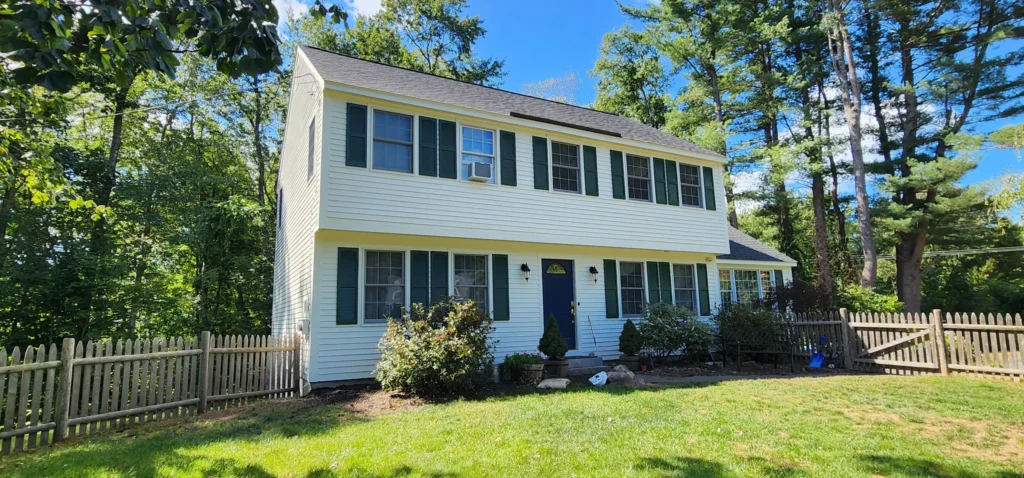
Average Price Ranges in New England and How to Budget
By now, it’s clear that exterior painting costs depend on several factors. But homeowners still want a ballpark estimate before calling contractors. While every project is unique, industry data and local averages can provide a helpful framework. For example, prices ranging for exterior house painting in New England can vary widely. Costs range depending on home size, siding material, and other factors. This helps homeowners understand what to expect, as the total cost—including prep, materials, and labor—can add up quickly. Ultimately, investing in your exterior home ensures long-term protection and value.
1. Average Cost Per Square Foot
Across New England, professional exterior painting typically runs between $2.50 and $6.00 per square foot. For a 2,000-square-foot home, that translates to roughly $5,000–$12,000 depending on prep, materials, and siding type. Larger historic homes with detailed trim or multiple stories can climb even higher.
For comparison, HomeAdvisor reports that the national average cost to paint a house exterior is $3,191, with most homeowners spending between $1,811 and $4,442 . However, New England’s harsher climate and higher labor rates usually push costs above the national median.
2. Additional Costs to Consider
- Lead paint removal: Common in homes built before 1978. Professional lead-safe practices can add thousands to your bill (EPA guidelines).
- Wood repair: Rotten siding or trim must be replaced before painting. The cost of painting trim is often calculated by the linear foot, which helps provide a more accurate estimate for detailed work.
- Primers and specialty coatings: Mildew-resistant paints or elastomeric coatings for brick and stucco increase material costs.
3. Budgeting Tips for Homeowners
- Plan ahead: Painting demand spikes in spring and summer, so book early to secure better rates.
- Don’t just pick the lowest bid: A suspiciously low estimate may skip prep work, leading to peeling paint within a year.
- Ask for a detailed breakdown: Reputable painters should explain labor, materials, and prep costs clearly. Some professionals may use spray exterior house paint for efficiency, which can impact both labor costs and the quality of the finish.
- Think long term: Spending more on durable paint and professional application saves money by extending the repaint cycle from 5 years to 10 or more.
When budgeting, remember: exterior painting is not just about aesthetics—it’s an investment in protecting your home’s structure against New England’s unforgiving weather.
Protect Your Home the Honest Way
At Honest Brothers Painting, we know that exterior painting in New England is about more than just looks—it’s about protecting your biggest investment from harsh weather, salt air, and seasonal wear. Our crew uses premium paints, detailed prep work, and proven techniques, and our team of professional painters ensures a high-quality, long-lasting result so your home looks beautiful and stays protected for years.
Whether you’re budgeting for a small ranch or restoring a large Victorian, our residential exterior painting services are tailored to your needs. We also offer free estimate for your home so you know exactly what to expect—no surprises, just honest results.
Conclusion
A quality exterior paint job does more than just refresh your home’s appearance—it protects your investment and enhances curb appeal. House painting costs can range from $1,500 to over $10,000, depending on factors like siding material, labor rates, and paint quality. While DIY painting might seem like a way to save money, it often leads to compromises in prep work and durability. Hiring a professional painter ensures a longer-lasting, more attractive result. To get the best deal, gather multiple quotes, choose a mid-range paint quality, and consider handling minor prep work yourself. Scheduling your project during the off season can also help you save money. By comparing prices from reputable local painters, you can find the right balance of value and quality for your next exterior painting project. Investing in a professional paint job is a smart way to protect and beautify your home for years to come.


